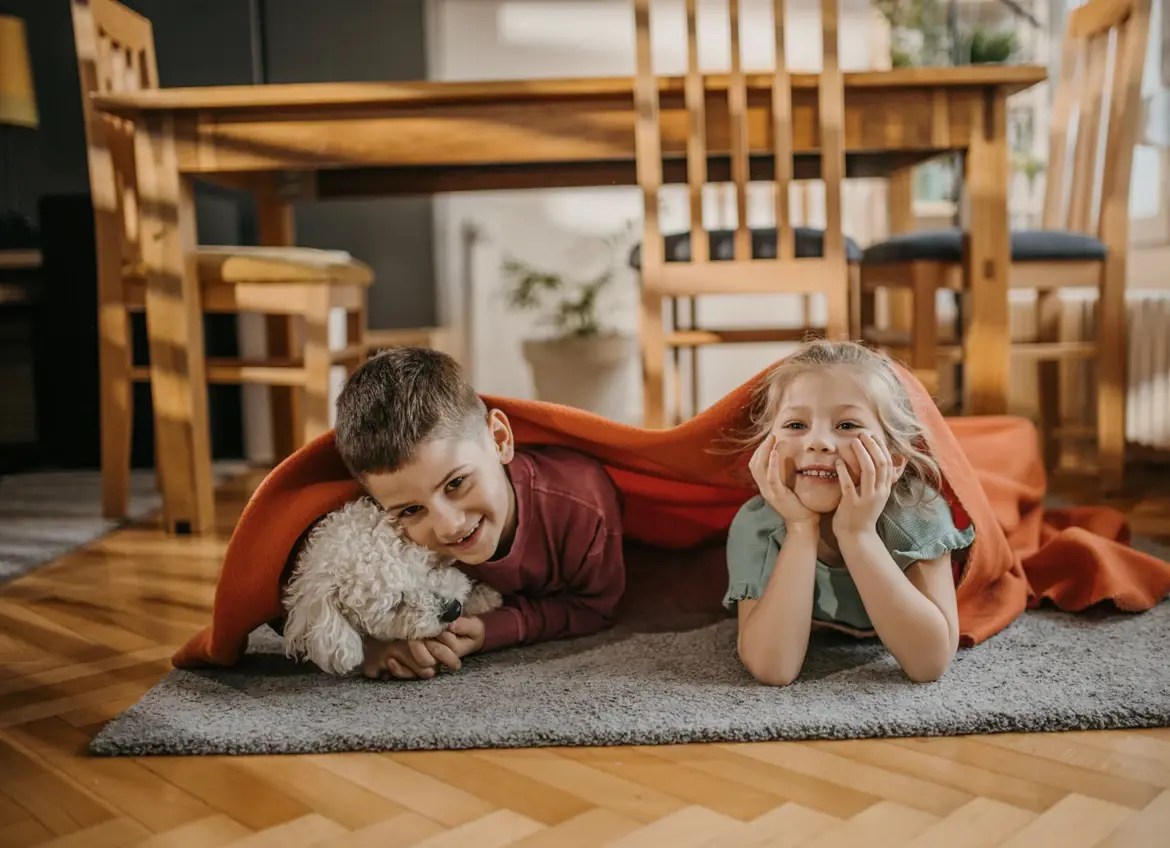
Did you know that approximately one-third of all households in the world have at least one dog?
Dogs and cats are the most common household pet, and many owners consider their furry friend(s) family. That's why it’s so important to create a happy, healthy home for them.
Every pet has different needs, but these are some basic guidelines pet owners should follow:
Safety
First and foremost, you want to ensure your home is safe for your pet. Look around for choking, strangulation, and suffocation hazards such as long cords, uncovered wires, or holes. You’ll also want to:
- Keep human food and medicines in a safe place.
- Eliminate anything they can use to climb to unsafe heights or spaces.
- Invest in a trashcan with a tight-fitting lid. Not only can pets make a mess with the trash, but they may also choke or suffocate on items inside.
- Research your plants and make sure they’re non-toxic for your pet.
- Keep harsh cleaners, pesticides, and items such as anti-freeze locked up. Pets can often open cabinet doors so make sure to latch them shut.
- Keep your toilet lid down, especially if you use automatic bowl cleaner.
- Reinforce your window screens. Cats falling out of open windows is so common that veterinarians coined the term High-Rise Syndrome for it.
Comfort
Dogs and cats should have a cozy place to sleep, healthy food, and clean water. Well-exercised pets are less likely to get into trouble, so be sure to provide toys and take dogs on long walks daily. If possible, make it possible for your pet to safely go indoors and outdoors at their leisure.
Indoor cats will need a litter box. Place it away from their food in an easily accessible private area.
Cleaning
Keeping up with your pet’s grooming will help you maintain a cleaner home.
- Clip their nails regularly to help with scratching
- Brush them often (especially before and after baths) to help with shedding
- Bathe them regularly to keep them and your home smelling fresh
Training your pet is equally as important as regular grooming—pets can do serious damage to your home and belongings if they aren’t trained properly. Whether you take on the task of training or hire someone else, make sure that your pet knows right from wrong and can understand basic commands. This could save you hundreds in damaged furniture, clothing, and household items.
Some damage, such as potty accidents, biting, and scratching are more avoidable than the regular wear and tear that comes with a pet. Choosing home finishes that will work well with your pet can also save you money. For example, install sturdy, hard-surfaced flooring that can withstand claws, water, and dirt. Choose carpet, rugs, and furniture that blend with your pet’s hair to help your home appear cleaner. However, you should still be prepared to sweep, vacuum, and clean more often with a pet in your home.
When furniture shopping, keep in mind that some fabrics are better at withstanding pet odors and stains, and some can even repel pet hair.
If you don’t have the option to choose pet-friendly finishes or furniture—and even if you do—you’ll want to have pet-specific cleaning supplies on hand. Invest in a vacuum made for pet hair and purchase cleaning products with natural enzymes to break down stains and odors. Monitor your pet’s accidents closely because the longer a stain sits, the more it settles into the fabric, and the more likely your pet will repeat the offense in that same spot.
If you’re hoping to keep the appearance of a magazine-style home, there are plenty of options online for furniture protectors, reusable lint rollers, decorative pet beds, and appealing furniture built to hide items such as pet toys and litter boxes.
Outdoors
Pets who visit the outdoors will need flea and tick protection. If these pests are on your indoor pet, they will find their way into your carpet, furniture, and bedding.
Ensure your outdoor area is a safe place for your pet to play and release energy. Determine whether you need to build structures or fences, and remove toxic plants from your yard before you let pets loose. Be cautious of using poisonous insecticides and fertilizers on your lawn, too.
Pet-friendly home features
These days, pets are becoming a more integral part of family life, and people are building handy features into their homes to accommodate pets. If you’re building a new home or planning renovations, consider adding features such as a pet shower (often in the mud room), food and water bowl station with a pot filler and built-in food storage, or creating a bedroom for your pet in the nook under the stairs.
The bottom line
Owning a pet is a big commitment, and they often take more time, money, and effort to keep safe and happy than owners realize. Creating a safe home doesn’t have to be difficult, but doing your best to provide a pet-friendly home will help you focus more on your relationship with your pet than the messes they make.
